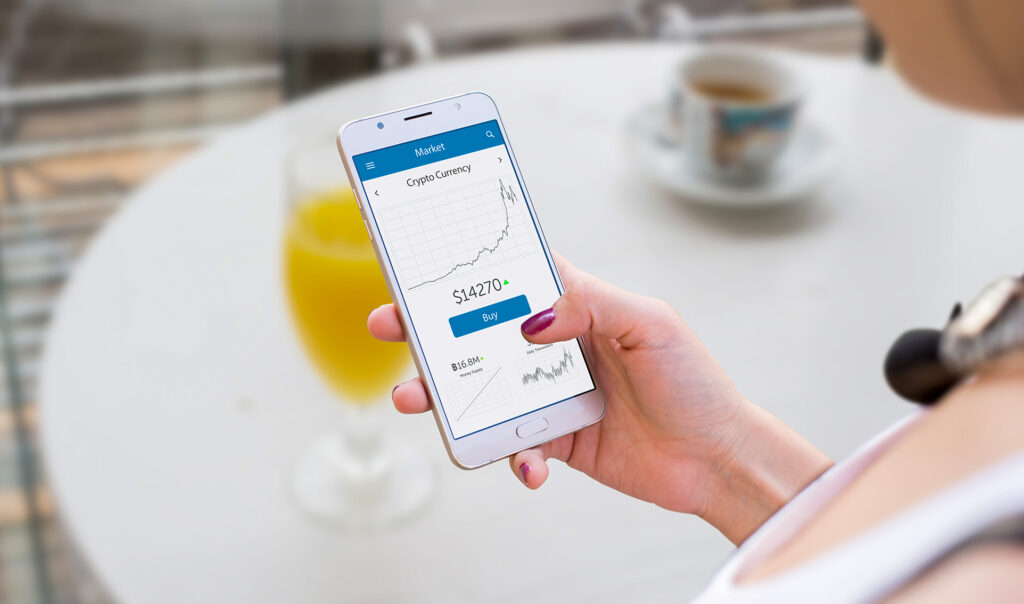Bitcoin and Banking: From Crypto Basics to Custodial Management
By now, you’ve probably heard a lot about cryptocurrencies and their possible impact on the economy and banking landscape. You may have read or heard reports about regulation, ransomware and volatility with up to $10k value swings.
Bitcoin doubled its value in 2021 and fell significantly in the first several weeks of 2022, but it’s not the only cryptocurrency to see noteworthy shifts. As a result, venture capital firms have invested in crypto fintechs like Coinbase to get ahead of the growing marketplace.
Where does that leave traditional financial institutions? This blog offers a general introduction, or review, of cryptocurrency and its banking implications.
For a deep dive into the regulations and risk of virtual assets, watch this on-demand webinar.
What are Cryptocurrencies?
The first cryptocurrency, Bitcoin, was introduced in a 2009 academic paper by an anonymous writer (or writers) under the pseudonym Satoshi Nakamoto. Flash forward to today: Bitcoin is among more than one thousand cryptocurrencies in existence and has made some speculators millions.
The original essay proposed a form of currency that didn’t need to rely on the trust in a centralized issuer or power. Instead, it proposed a more democratic system that could be verified and defended computationally.
Although the details can become complex, the cryptocurrency fundamentals are simple:
- Cryptocurrencies have value.
- Crypto is digital-only.
- Typically, there is no central issuer or authority.
- Computers solve complex formulas with a cryptographic proof of work to verify transactions and introduce more coins into the system.
- A decentralized peer-to-peer network assesses that cryptographic proof of work and approves whether a new cryptocurrency has been “mined.”
- Managed scarcity avoids inflation, and as a result, a limited number of “coins” can be mined.
In short, cryptocurrencies leverage advanced mathematical formulas to create digital assets. The value of these digital assets ebbs and flows, much like traditional currencies or stocks. Sophisticated cryptography prevents counterfeiting and fraudulent transactions.
How Do Cryptocurrencies Work?
Cryptocurrencies work within a system of decentralized computers that manage and record transactions. As participants transact in the network, those transactions are applied to a universal ledger, commonly called a blockchain.
Transactions must be signed and verified with unique cryptographic keys, ensuring that trades on the blockchain have occurred. This safeguard eliminates double-spend risk.
Powerful computers on the network, called nodes, review and verify new transactions. Essentially:
- The system broadcasts recent transactions to all nodes.
- Each node collects new transactions into a block.
- Each node attempts to find a complex proof of work to verify its block.
- When a node finds proof of work, it broadcasts the potential block to all nodes.
- Nodes accept the block only if all transactions in it are valid and not already spent.
- Nodes show acceptance of the block by working on the next block in the chain.
The source code determines how many Bitcoins can enter circulation. For instance, only 21 million Bitcoins can ever be mined, forcing scarcity and preventing inflation.
How are Cryptocurrencies Created?
Those who operate these nodes are called miners for the similarities between mining crypto and precious resources. Both reward the miner with a source of value and require a great deal of effort to achieve.
In a practical sense, miners function as auditors, solving math puzzles unique to each transaction to prove that it is the only time that a bitcoin has been sent. They then compile these transactions into a block. After completing a new block, a miner receives a new bitcoin for their work.
These block rewards incentivize participation in the system, paying those who sacrifice computer power. Ultimately, this system pays more significant dividends to those who honestly create blocks, as fraudulent ones rapidly become disproven.

How Does Blockchain Work?
Blockchain, or distributed ledger technology, is a public digital ledger of transactions maintained by a network of independent computers that typically require no intermediary like a government or bank.
Blockchain protocols differ slightly between cryptocurrencies. However, they largely adhere to the following procedure.
Thousands of nodes have a copy of that ledger and the ability to authorize transactions. As one block in the chain leads to the next, these nodes vie to confirm the transactions using computer algorithms. Once a participant creates a block and receives a “block reward,” the total number of ledger dollars increases.
Let’s say one user trades a Bitcoin for a certain amount of USD. That transaction receives independent verification by peer-to-peer computer networks and is time-stamped and added to a growing data chain. The nodes on the network will authorize that exchange, apply the transaction to the ledger and ultimately move it forward. Once 50 percent or more approve the transaction, the transaction is considered valid. On average, new Bitcoin blocks are mined every 10 minutes.
What Makes Cryptocurrencies Secure?
Increased security is one of the main appeals of cryptocurrency. Various encryption algorithms and cryptographic techniques safeguard transactions within the cryptocurrency’s economy.
Cryptographic hash functions are an essential element of the blockchain protocol, serving as randomly generated identifiers for transactions and identities that require massive computing power to guess. Computers use these functions to verify transactions and add to the chain.
Since continued addition to the blockchain requires consistent computational input, any attempt to game the system is rendered infeasible within a couple of blocks. Essentially, all other computers working together on separate concurrent chains will rapidly outpace the false chain that a fraudster is trying to create.
Similarly, hacking the chain would require unheard-of computing power that could compromise at least 50 percent of the supercomputers on the system. So, there is a much stronger incentive to play by the rules.
How are Crypto Accounts Secured?
Much like other means of transacting, the greater risks arise from the individuals taking part in the economy rather than the system overall.
Every active participant in the cryptocurrency economy also has a public and private key to the cryptographic sequence. These keys use cryptography and a random series of letters and numbers to identify the individual. Participants usually have:
- A private key to access their cryptocurrency wallet
- A public key to transact with others
Like other transactional methods, these aspects of the cryptocurrency ecosystem are not immune to hacking or other risks if both keys aren’t adequately secured. As a result, wise participants in the space deploy additional safeguards to ensure bad actors can’t manipulate the cryptocurrency wallet.

Why Should Banks Care about Cryptocurrencies?
Cryptocurrencies have been a topic of much debate, with naysayers decrying many factors from volatility to environmental impact. Nevertheless, there’s a growing awareness of the inherent opportunities that cryptocurrencies offer, and banks should take notice—especially as competition in this market increases.
Venture capital firms have been streaming into the financial technology industry to capitalize on the growth, edging out financial institutions.
For example, cryptocurrency company Coinbase enables the purchase, sale and transaction of multiple cryptocurrencies and the storage of those digital assets. Since 2012, Coinbase has grown to 73 million users. Similarly, Square Cash sales volume was roughly $3.5 billion in Q1 of 2021.
Following suit, money services businesses that make revenue from conversion fees, like PayPal, have started offering the service and looking to the market to buy crypto expertise. Understanding the risk and responsibilities of managing digital assets, PayPal acquired a fintech startup called Curv to enable PayPal users to buy, sell and hold cryptocurrencies.
Banks should care about cryptocurrencies because many of their customers are showing interest and competitors are getting there first. Capitalizing on the trend could ensure that customers engage in the space safely and deepen the connection with their institution.
What Does the Crypto Boom Mean for Banks?
Despite the growing interest in cryptocurrencies, concern and uncertainty still exist. Many consumers look to experts in the field for custodial management to safely navigate the risks, reliably make transfers and receive tax support.
Financial institutions have an opportunity to maintain their role as financial advisors regarding crypto. Many consumers want to participate but need a trusted partner, such as their institution, to better understand how. In addition to offering education, allowing customers to dip their toes into the crypto space could generate revenue.
As the oldest and most established cryptocurrency, Bitcoin has received the most attention from the public and federal government. Rather than recommending its use as a currency, the IRS classifies it as an asset, much like a stock. This regulatory certainty decreases the risk of engaging in the space and opens the door for banks. As such, Bitcoin has been a primary focus for the intersection of crypto and banking.
Banks have a distinct advantage to reassuring customers, as they are institutional, regulated, audited and market-proven. They can facilitate entry participation in crypto without navigating the risky territory of Bitcoin as currency. Some are already engaging fintech companies to offer custodial management solutions.

What is Crypto Custodial Management?
While this blog has explored the high-level cryptocurrency essentials, bankers needn’t worry about the ins and outs of crypto to offer custodial management services. Banks can simply become channels through which customers can engage. A bank’s role in working with a custodial management system is to remove some of the risks and act as a trusted vault of information.
Effective custodial management uses best practices to safeguard crypto assets and the keys to access them. These safeguards require avoiding hot wallets, whose keys are still connected to the internet and therefore vulnerable. They might even break keys into parts so that no one person has access.
In practice, customers access their digital banking account, sign a robust terms and conditions form, review the real-time conversion rate and start their crypto journey. After they determine how much they want to buy, they receive a quote. Upon their authorization, money moves directly from their account to buy Bitcoin, and the institution stores the private key. At tax time, customers will receive a document to file taxes on any gains.
It’s worth remembering, and informing customers, that there is volatility in the value of these assets, and some consumers could lose money. The real-time rate of exchange regularly refreshes so that customers can see losses and gains.
What’s Next?
The cryptocurrency landscape evolves constantly, with more public scrutiny than ever. There are also talks of the Federal Reserve releasing its own digital currency, Fedcoin, with distributed ledger technology.
Custodial management solutions enable banks to help their customers safely engage in the crypto space while maintaining their role as a financial advisor and resource.
Looking ahead, it’s wise to keep an eye on the Federal Reserve and additional regulatory changes. To start navigating the regulatory requirements now, watch this webinar on the topic.